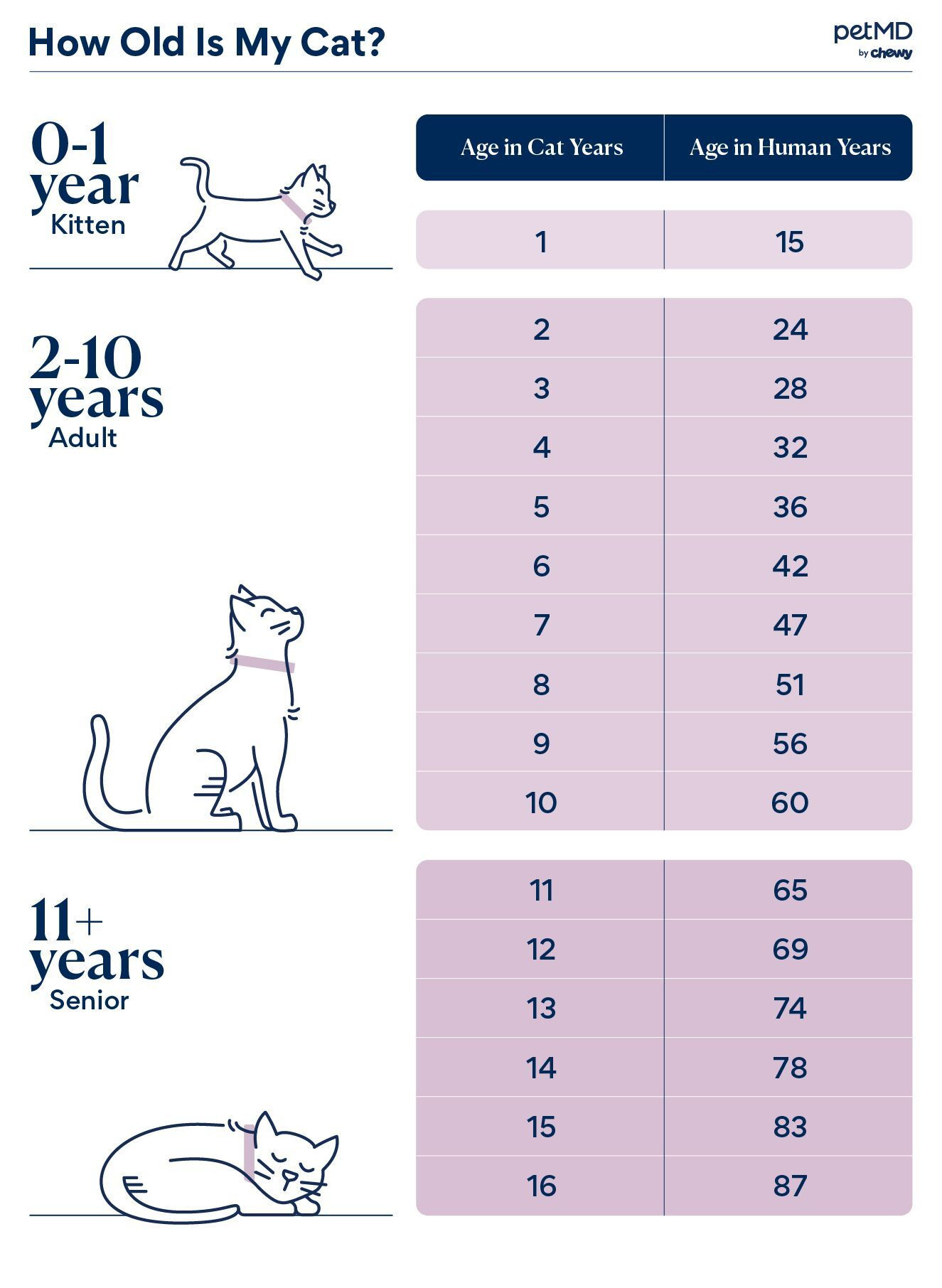Cat lovers adore celebrating their furry companions’ birthdays, recognizing them as cherished family members. However, a yearly celebration might not accurately reflect a cat’s aging process, which evolves throughout their life. Understanding how to translate Cat Years to human years offers valuable insights into your cat’s life stage.
“Converting cat years to human years allows us to understand our cat’s aging journey in relation to our own,” explains Dr. Mary Gardner, a Doctor of Veterinary Medicine and co-founder of Lap of Love Veterinary Hospice. “Just as senior humans may face mobility challenges, a cat aged 11 or older – equivalent to 60 human years – might experience similar age-related struggles.”
So, how can you accurately calculate your cat’s age in human years? It’s not as simple as multiplying by seven!
Key Facts About Cat Years:
- In their first year, cats age the equivalent of 15 human years.
- Breed has minimal impact on a cat’s aging rate.
- Veterinarians use health indicators to estimate age in cats with unknown birthdays.
Understanding Cat Years to Human Years Conversion
Calculating cat years isn’t a straightforward multiplication. The American Veterinary Medical Association (AVMA) highlights that cats reach approximately 15 human years within their first year. By their second year, this progresses to about 24 human years. Beyond the second year, cats age at a rate of roughly four human years for each subsequent cat year.
Interestingly, a cat’s breed doesn’t significantly alter their aging rate. This conversion principle generally applies across all breeds.
Cat Age Chart: Find Your Cat’s Human Age
Refer to the chart below for a quick conversion of your cat’s age to human years:
 Cat age in human years chart: Understand your feline's age
Cat age in human years chart: Understand your feline's age
Determining Your Cat’s Age When Unknown
Many cat owners adopt their feline friends without knowing their exact birthdate, often celebrating a “gotcha day” instead. However, understanding your cat’s approximate age is crucial for age-appropriate care. Veterinarians have several methods to estimate a cat’s age when their history is unknown. These indicators include:
- Teeth Examination: A kitten’s baby teeth erupt around 2-4 weeks, replaced by permanent teeth around 3-4 months. Adult cats around 1-2 years old typically have clean, white teeth. As cats age, teeth may show tartar buildup, staining, or wear, providing clues about age.
- Coat Condition: Younger cats usually have soft, fine fur. As cats mature, their coat might become thicker and coarser. Senior cats may even have patches of gray or white hair.
- Eye Appearance: Young cats often have bright, clear eyes. With age, the iris can become duller, and some older cats develop a slight cloudiness in the lens (lenticular sclerosis), which is a normal aging change.
- Muscle Tone and Body Condition: Younger cats are typically more muscular and agile. Older cats may experience some muscle loss and become less active.
Cat Lifespan and The Importance of Age-Appropriate Care
Thanks to advancements in veterinary medicine, improved nutrition, and the strong bond between humans and cats, our feline companions are living longer, healthier lives than ever before.
Dr. Gardner notes, “The average lifespan for a cat is around 12 to 15 years. Purebred cats tend to live approximately 12.5 years, while mixed-breed cats often live a bit longer, around 14 years.”
Knowing your cat’s age in human years empowers you to provide the best possible care throughout every stage of their life. Understanding their life stage, whether kittenhood, adulthood, or senior years, allows for tailored nutrition, preventative healthcare, and environmental adjustments to ensure their wellbeing and happiness for years to come.
WRITTEN BY:
Content Creator
solcat.net

